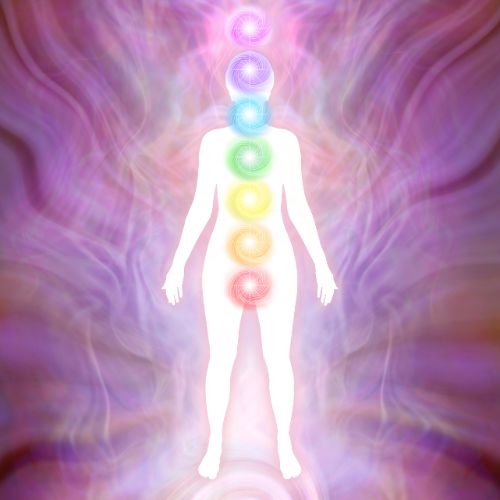
Etymologically, the term ‘Kundalini’ means coiled. In the Tantra tradition, Kundalini symbolizes latent, hidden, or coiled psycho-spiritual potential. Kundalini Yoga is a practical branch of Tantra philosophy that equips us with tools and techniques to harness this latent potential. The aim of Kundalini Yoga is to awaken this dormant potential through advanced esoteric techniques rooted in traditional Hatha Yoga and Tantra.
Kundalini yoga is a part of the tantric tradition. Since ancient times, people have realized that mental faculties can be refined and expanded independently of external objects. Tantra asserts that the range of mental experiences can be broadened. While the mind can have object-based experiences through the senses, these experiences are subject to the limitations of time, space, and corresponding objects. On the other hand, experiences beyond these limitations occur when the present mind expands beyond defined borders. In this expanded state, energy is released.
The practice of kundalini yoga is the process of realizing this transcendental experience beyond the limitations of the mind and its faculties. This expansion of awareness and mental experiences occurs through the awakening and liberation of Kundalini Shakti (energy) within us.
Process of Kundalini Yoga
According to a classic text on Kundalini Tantra known as Shat-Chakra-Nirupana, the process of traditional Kundalini Sadhana entails Bhuta Shuddhi or Tattva Shuddhi (purification of elements).
However, before elemental purification, it is highly important that the aspirant has trained their body and mind to a sufficient degree through practices of Hatha Yoga and meditation. Kundalini is the cosmic prana (life force) embodied within us in a dormant state.
Before awakening the Kundalini, one requires intense purification of the body-mind system. Tools of Hatha Yoga, such as Shatkriya (six cleansing practices), Asana (traditional Hatha Yoga poses), and Pranayama (Hatha Yogic breath-work), help purify the body and mind from gross to subtle levels. The purpose of all these techniques in Kundalini Yoga class is to purify the pranic system consisting of Nadis (psychic or pranic channels), Chakras (pranic or energy centers), and Tattvas (elements).
All the Chakras located in the body are the centers of Tattvas (elements). The lower five chakras—Muladhara chakra (root), Swadhisthana Chakra (sacral), Manipura Chakra (Navel), Anahata Chakra (heart), and Vishuddhi Chakra (throat)—are the centers of Tattvik activities. The other higher chakras are the centers of subtle elements experienced at a higher dimension of awareness. These are vital spots in the body where energy exchange or concentration is at an intense level.
Our body is an electromagnetic bio-chemical entity. In other words, the reality we live is based on energy transmission and exchange. Each piece of information that flows in or out is based on energy exchange. These chakras are the centers of these energy flows. These energy centers are vital also because there are energy lines emanating from there. On the physical plane, these correspond to nerve plexuses.
Aspects of Teaching in Kundalini Yoga Training
The primary goal of Kundalini Yoga training is to reset chakras, addressing blockages and malfunctioning. This is an initially challenging and arduous task. As practitioners engage in practices such as asanas, pranayama, mudras (psycho-physical gestures), and bandhas (energy or psychic locks), they experience heightened emotions and intensity of energy. These upheavals during Kundalini Sadhana classes result from the upsurge of energy due to chakra resetting and toning. Chakras, acting as subtle switches in specific brain centers, correspond to instinct centers.
Various Kundalini and Chakra-oriented pratyahara (mind withdrawal) and dharana (intensive focusing) meditation techniques enable practitioners to channel released or awakened energies in the pranic system. The Kundalini yoga tradition involves transmuting existing psycho-spiritual energies. As the refined and awakened energies within the body alter, a shift in consciousness occurs. Meditative awareness emerges through nadi cleansing and chakra activation.
Tantra views matter-energy-consciousness as a continuum, believing in the transmutation of matter’s energy. Therefore, mobilizing bodily energies through Hatha Yoga techniques initiates a refined awareness within the practitioner.
Techniques and Processes used in Kundalini Activation
In Kundalini Yoga training, several techniques such as Tattva Shuddhi (purification of the five elements), Chakra Shuddhi (Chakra cleansing), Chakra Dharana (intense visualization of chakras), Kundalini kriyas, and traditional Hatha practices prove highly effective in creating transformative experiences for individuals.
Ideally, Kundalini Yoga classes should incorporate a perfect blend of activating and purifying practices like Shatkriya, Asana, Pranayama, Mudra, Bandha, and internalizing techniques from the stages of Pratyahara and Dharana.
A proper combination of these elements in Kundalini Yoga classes yields very uplifting results. In addition to the mentioned techniques, various meditation techniques involving different Yantras (visual primordial geometrical symbols) and Mantras (psychic sound vibrations) are employed. Each chakra has its corresponding sound vibration (mantra) and a specific psychic symbol. During the stages of dharana meditation on chakras, the awareness of aspirants is deeply internalized. The Chakra Dharana technique is one of those practices that channel awareness to such an extent that a practitioner can visualize each symbol of the chakra with intense focus and awareness.

